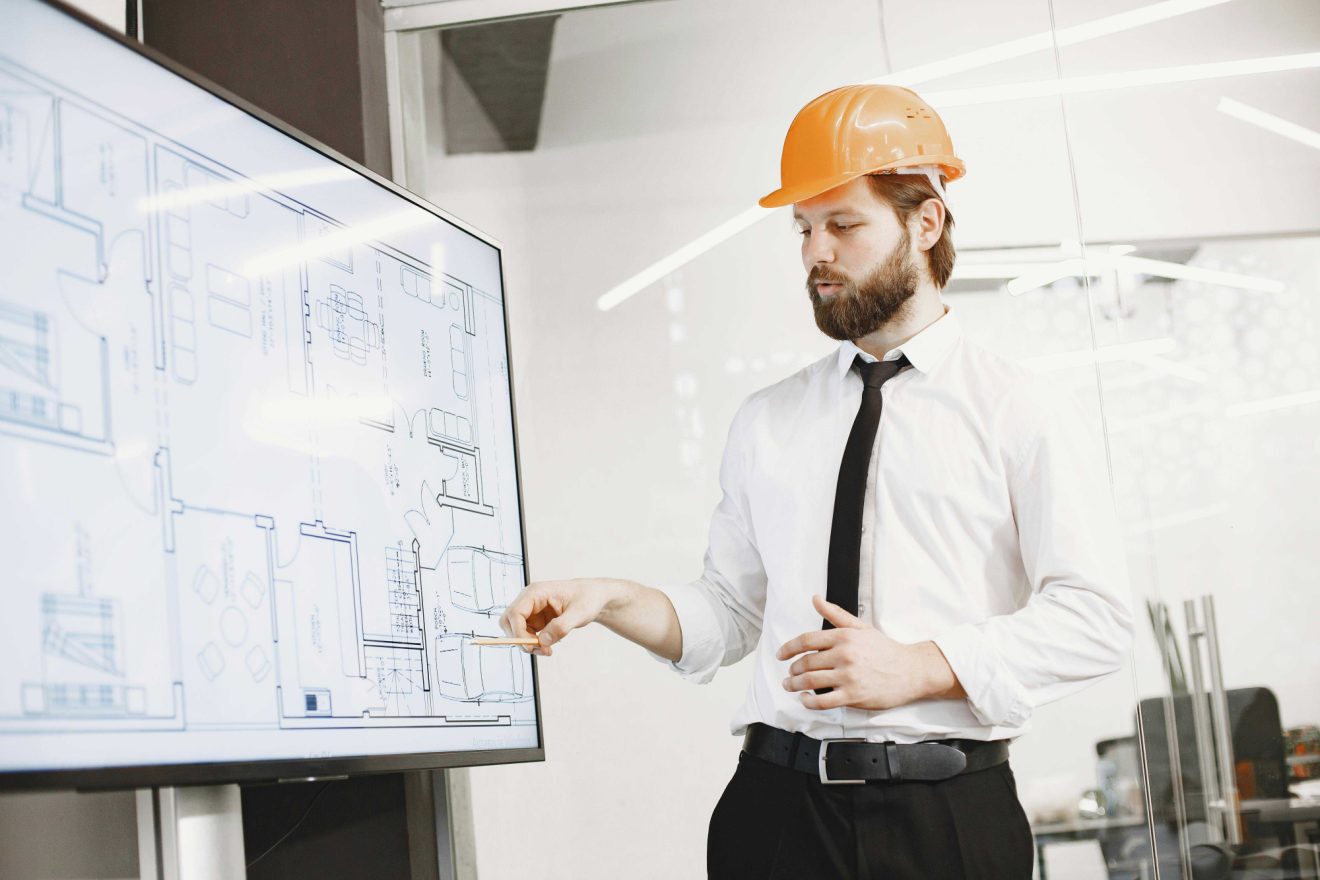
Throughout a building project, construction phases present different challenges for owners and contractors. While early parts of the project are all about planning, team selection, and risk management, later parts lean hard on communication, scheduling, and handling changes.
Each phase of a construction project can benefit from technology, whether contractors use specialized tools for specific tasks or rely on a comprehensive construction management platform that helps them stay organized from start to finish.
Let's take a deeper dive into construction project phases and tech that can benefit teams during each one.
Phase 1: Project Design
In the project design phase, the owner teams up with an architect and engineer to nudge the idea closer to becoming a reality. The main aim here is to create a full set of drawings the construction team can use to kick off the project. But before all that happens, it starts with a solid business case for why the project should even get off the ground.
The design team creates initial designs and a cost structure to determine the project's feasibility. Once the cost-benefit has been established — i.e., the owner can access the capital to build the project and likely won't go broke on the deal — the owner, architect, and engineer work together to decide exactly what the project will look like, how big it will be, and what features it will have.
The Tech That Tackles It
At this point, the project can be very conceptual and difficult for an owner and designers to imagine, leading to errors and oversights in design. Thankfully, design technology has made it easier to envision a finished project with capabilities like digital twinning. Digital twins are virtual representations of projects that display 3D versions of designs, making it easier to spot potential problems early.
Artificial intelligence (AI) tools go one step further by proactively pointing out design errors. For example, AI permitting tools can catch land use problems before they cause major setbacks. Plus, AI can highlight design conflicts early on so they can be sorted out before the project goes to bid. If those issues pop up during construction, they can lead to change orders, bigger bills, and longer timelines.
Phase 2: Project Procurement
The second construction phase is all about bringing together a team of builders to make the project a reality. During the procurement phase, owners choose a handful of general contractors to submit bids. Each contractor makes their case for why they should be picked for the project. A big part of their bid includes the bottom line — how much it will cost the owner to get the work done.
The owner uses project bids to choose the contracting team that offers the best value. Price factors heavily into this decision, but a contractor's experience and financial backing also matter. At the end of the procurement phase, the owner selects a building team and awards a contract for the project.
The Tech That Tackles It
A ton of information goes into bid packages (the collection of info an owner gives contractor candidates for a project), and a lot of information comes back with the bids. Construction bidding software can be a big help for both owners and contractors during the procurement process.
Construction owners can use bidding platforms to share all the info bidders need. This way, everyone gets the same details, bids are collected in one place, and it's easy to compare them based on different factors.
Bidders can use estimating software to complete takeoffs quicker and more accurately than they could with pen and paper or a spreadsheet. The software also allows estimators to share information with contractors and materials suppliers to generate accurate numbers for bids. Plus, bidding software keeps all the project data, documents, and messages together so contractors can stay organized while meeting their bid deadlines.
Phase 3: Project Preconstruction
Once the building team is in place, final preparation for construction begins. The general contractor finalizes specialty and subcontractor partnerships, draws up a schedule, and gets ready to welcome construction crews to the jobsite.
Preconstruction involves a whole lot of planning — including how things should go, what to do if things go wrong, and how to maintain a safe construction site. A lot of balls are in the air for contractors at this stage, but when done right, preconstruction can take a lot of risk out of the rest of the project.
The Tech That Tackles It
Construction project management software can keep preconstruction on track. It combines all the various activities, highlights potential bottlenecks, and ensures nothing falls through the cracks.
On-site health and safety apps help project teams stay compliant. Project teams can use permitting software to manage the paperwork and shorten wait times. And AI tools can create project schedules and adjust them on the fly when anything changes.
As project managers work to streamline everything, their communications, applications, site photos, and documents can live in a central location, organized and accessible. Digitizing the jobsite links the site and the office, allowing almost instant access to any new information, drawings, and change orders. It also prevents communication breakdowns that can cost the project time and money.
A preconstruction phase with good communication and shared information can help avoid miscommunication and frustration later.
Phase 4: Project Execution
The construction phase is what everybody outside of the project can see: Crews are on site, and structures are going up. In theory, the whole project is planned out from start to finish, and the pieces should come together easily. But the reality is more complex. With so many people working together, things are bound to change daily: Maybe soil quality isn't what was expected, materials come late, a huge windstorm pauses the work, or the owner changes the project scope.
No matter what happens, project execution is all about keeping things moving forward. That means a lot of information gets passed around, and field and office teams need to collaborate to make quick decisions about the next steps.
The Tech That Tackles It
Field teams can rely heavily on technology to help keep the lines of communication open. Drones can fly over the site to give crews on and off-site a bird's-eye view, while video captures can offer remote tours of internal areas. Virtual meeting software means project managers and executives can stay updated with less travel back and forth to the site. And teams can upload photos to cloud-based platforms to show project progress as a backup for progress billing applications.
Throughout the project, superintendents and project managers can monitor resources through equipment tracking, workforce planning, and materials management tools.
These digital tools bring the information front and center, helping project managers spot conflicts early. This way, they can pivot as needed to tackle any issues before they snowball into delays, extra work, added costs, and stress.
Phase 5: Project Closeout
Closeout is a construction project's final phase, where the team wraps things up before handing it over for its intended use. It's a mistake to treat project closeout as an afterthought. Construction project managers have a short runway to tie up loose ends, ensuring the owner is happy and the project functions well during operation and maintenance.
One reason closeout can be tricky is that teams start to become less available as they finish their work and move on to new projects. Project managers need to gather all the info on the current project before that happens.
Closeout management should be considered early and often during a project. That way, project teams can collect manuals, warranties, and documents as the project progresses and organize them for easy access during closeout and handover.
The Tech That Tackles It
A formal submittal process allows contractors to double-check installation details before they start any work. Submittal platforms create a space where designers and contractors can share notes about their work during the build. They also provide a spot for reviewing warranties, manuals, and requests for more info. These platforms help build a collection of important information that will be included in the closeout package.
A smooth and efficient project can impact the owner's feelings about the whole thing, impacting future job opportunities. But keeping owners happy isn't the only reason to keep good closeout records throughout a project.
Archived project data can be useful to contractors for years to come. If the owner has an issue with the finished project or its operation (and hasn't read or understood the closeout materials), the contractor can easily access all that data and answer any questions. Plus, if any legal claims pop up after closeout, having that information on hand can help back up the contractor's side of the story and guide them toward a successful outcome.
Digitizing Construction Phases: Best Practices
Each construction phase presents opportunities to use technology to improve efficiency, accuracy, and organization. With so many products available to help contractors, what's the best way to build a tech stack that fits a specific company or project?
Review Current Processes
Contractors should start their optimization journey by reviewing their current processes. Consider each construction phase separately, find individual pain points that are costing time and money or causing frustration, and start there.
Think About Access and Security
Next, think about access and security features. Owners are often concerned about data theft and sharing, so choose a solution that manages user groups and sets permissions for each person. And don't forget about the on-site staff — digital products should be cloud-based for easy access from anywhere and work well on mobile devices.
Consider Integration
Each construction phase presents distinct challenges and requires different tools. Consider any new solution against the team's current processes and how well they'll integrate for seamless operation. For products that don't integrate, or for sharing with industry partners who don't use the same tools, consider how to handle exporting and importing data. It shouldn't take days or weeks to build a closeout package, for instance.
Assess Customer Support
Ask about customer support before selecting any new product. Things may seem rosy now, but when a system doesn't work at 7 p.m. on a Friday, the level of support will matter to teams who just want to get on with the work.
Look for Flexibility
Bringing in new tech is always challenging because teams often struggle to shoehorn their existing processes into the new solution's framework. Choosing flexible and adaptable solutions can help ease that transition and increase user buy-in.
Optimizing Your Tech Stack for a Competitive Edge
Construction technology is a growing field that offers solutions to help contracting teams through every project stage.
Contractors should look at their current practices when building their tech stack and focus on picking products that tackle their biggest issues first. Also, consider how well a new product will integrate with existing systems and how it might work with future tools.
As technology evolves, construction businesses will have to adopt systems to become more efficient or risk losing jobs to others who do. The real game-changer isn't just whether teams use technology — it's how effectively they leverage it to drive results.



